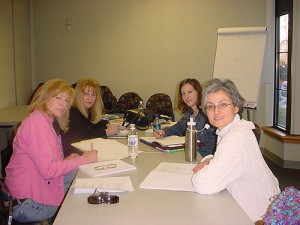 All writers get rejection slips. It’s just part of writing if you submit your work to publishers. But if you’ve been seriously writing fiction for quite a while, yet ALL you’ve received for your work are rejections, then take a closer look at one of your short stories. In fact, do you really have a story – or do you have what editors call “an incident”?
All writers get rejection slips. It’s just part of writing if you submit your work to publishers. But if you’ve been seriously writing fiction for quite a while, yet ALL you’ve received for your work are rejections, then take a closer look at one of your short stories. In fact, do you really have a story – or do you have what editors call “an incident”?
A story has a protagonist who has a big problem to solve. As the plot thickens, this character struggles and struggles to solve the problem. As he does, he encounters obstacles at every turn until, finally, he is able to solve (or at least resolve) the problem. In doing so, this character changes or grows somehow, so he is no longer the same person he was at the start of the story. He may be a little wiser now, or a bit more careful, or maybe he just has a better understanding of what he wanted in the first place.
An incident is simply a series of actions and occurrences in a character’s life. But these things don’t change the character. By the end of the final page, he is exactly the same person he was on page one.
Does your fiction contain all of these story elements? If not, chances are you have written an incident and not a full-fledged story, and that just may be why your work keeps getting rejected.
Give your main character a big problem to solve right at the start. The problem could be something he wants, or somewhere he must go, or someone he must find. As he tries to solve his problem, give him plenty of obstacles to make things get harder and harder for him before he is able to solve the problem.
Finally, before you mail your manuscript off to an editor, ask yourself this question, “How has my main character changed or grown as a result of struggling to solve his problem?” If you can easily answer this question, and your manuscript is well-written, then you probably have a great story. And it should be only a matter of time before you receive your first acceptance letter.
****************************************
 Through the years I’ve belonged to several critique groups myself.
Through the years I’ve belonged to several critique groups myself.
Quite often though, I’ve seen writers get discouraged from the feedback they received through critique groups and a few of these writers even gave up trying to write for children.
That should never happen!
Here are some tips for helping everyone make the most of a critique group:
1. Be sure to join or start a critique group that includes at least a few published children’s writers. If no one in your group has been published, it is a case of “the blind leading the blind.” Writers in the group might not know what to look for in a manuscript. As a result, comments and suggestions will be based more on personal tastes rather than any real knowledge of what makes a children’s manuscript marketable.
2. Make sure the comments and suggestions given to each writer are positive and constructive. Too often, manuscript critiques turn into attacks on a manuscript rather than any positive and constructive criticism of the work itself. Also, beginning writers tend to nit-pick over small details (the color of a character’s hair or the word used to describe something) rather than the elements that will make or break a story – elements such as conflict, rising action, point-of-view, etc.
3. Start by critiquing short pieces rather than novels-in-progress. I recommend this for a couple of reasons.
First, critiquing short pieces will allow time for everyone in the group to submit work for critique at each and every session. You want each person to feel he/she received something of value at each session. With shorter manuscripts there is less of a tendency to get bogged down with a single manuscript and spend too much time on it, leaving little or no time for critiquing all the other manuscripts presented for critique.
Second, shorter pieces are easier to critique, especially if everyone is checking to see if these short works include all the key elements of a marketable story. It’s often difficult (particularly for beginning children’s writers) to identify just what needs to be changed or revised in the chapter of a novel, for example. But generally, the problems in a short work, like a picture book manuscript or a short-story, can be easily identified if writers know what these are.
4. Give yourself time to get to know and trust each member in the group. Your critique partners can become valued friends and associates over the years. But it takes a while to really get to know and trust someone new.
When you join or start a critique group, before each and every meeting, remind yourself to be positive, helpful, and constructive in your criticism.
Try to never leave the session knowing that you’ve made a writer feel hopeless about his or her work. Do everything you can to make each writer in the group feel comfortable, even if you are not the leader of the group.
Over time, members will begin to trust each other and be willing to share more and more of their work with the group.
5. Celebrate each member’s publishing successes.
********************************
Happy writing!
Suzanne Lieurance
Another lesson which can be summed up in one word and, at the risk of sounding all Sesame Street-ish, the word for today is: Improve.
I can hear a little mumble coming from your side of the monitor: How does she know I need to improve my writing? How does she know I’m not brilliant? Truth is I don’t know how brilliant you are (or aren’t) but I do know you can improve. How do I know? Because
It's been a while since I shared a link to a great writing resource, but I had an email from an old acquaintance today asking for some tips on getting started as a children's author. Among other advice, I suggested she head over to the SCBWI Australia website. There, among other resources, she'll find a great series of articles contributed by various SCBWI Australia members on topics including

There are dozens of tips for making your fiction and nonfiction for kids more marketable. But one of the FIRST steps to consistently selling your work is learning how to study the markets.
Click here to learn more!
No Tags
Another guest article, from multi-published children's author Robyn Opie. Enjoy!
Sally
Getting a Children's Book Published: The Pony Game
by Robyn Opie
When I'm looking for ideas for a children's book, I sometimes think about subjects children love, such as horses, dinosaurs, sport etc. These popular subjects inspire book after book. Lets face it, they sell in the thousands and publishers

Check out our instructional CDs and learn specific tricks of the trade you need to know about writing for children and/or adults.
Order the CDs separately or buy 3 CDS and Get 1 CD FREE!
Click here to learn more and to order!
plotting techniques,
query letters,
Write for children,
writing cover letters,
writing for children
 All writers get rejection slips. It’s just part of writing if you submit your work to publishers. But if you’ve been seriously writing fiction for quite a while, yet ALL you’ve received for your work are rejections, then take a closer look at one of your short stories. In fact, do you really have a story – or do you have what editors call “an incident”?
All writers get rejection slips. It’s just part of writing if you submit your work to publishers. But if you’ve been seriously writing fiction for quite a while, yet ALL you’ve received for your work are rejections, then take a closer look at one of your short stories. In fact, do you really have a story – or do you have what editors call “an incident”?





I love this idea of improving being a distinctly separate phase from editing. Like you, I'm always looking at older stuff and finding glaring mistakes with words and generally the rhythm of the whole thing. I also know when a piece is ready to share when I can leave it a while and then find nothing to change. That's when you need to get the experts in!
Very great comments about the blog post "Write for Kids 101 - Lesson 4: Improve". The Sally Murphy's Writing for Children Blog was very nice. Thanks for sharing.<br /><br /><a href="http://comicworldonline.com" rel="nofollow">comicworld</a>
Thanks for another great post, Sally. I'm knee-deep in editing right now and looking out for all those little bits and pieces that improve my writing. It's amazing how the removal of some of those bland words like 'that' and 'just' can make my writing so much better. And I love the fact that no matter how long I write, I'll still have room for improvement. Learning how